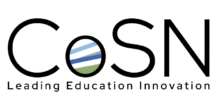7 Essential Leadership Guidelines for Using Generative AI in Schools
Watch the RecordingListen to the Podcast
This edLeader Panel is presented by CoSN and AASA.
Sponsored by ClassLink
“Uh oh” and “Oh no”—in 2022, that was the typical, collective reaction of administrators and educators to using generative AI in the classroom. From concerns about cheating to students falling behind on essential skills, the initial reaction was extreme apprehension. In 2024, though, schools have started creating policies and guidelines for using generative AI with K-12 students.
Focusing on the Essential Leadership Guidelines from Artificial Intelligence & Generative AI: Empowering a Deeper Conversation, part of CoSN’s EmpowerED Superintendent resources, district leaders from the edLeader Panel “Leading and Leveraging Artificial Intelligence Tools Within K-12 School Districts” discussed how, by offering teachers, parents, and students scaffolding to understand best practices, AI can become another powerful tool in student learning.
Awareness
The first step is to make sure that conversations about generative AI are happening at all levels. Administrators need to understand how it works and how it can benefit learning. For teachers, they need to be involved in the process of selecting any AI tools to use in the classroom as well as developing the guidelines. In addition, having instructional coaches who have successfully used AI to teach other educators can create more comfort with the technology. One of the biggest leverages can be the fear of missing out on using a technology that could benefit the students.
Limitations
At the same time, all community members need to know that this is just another tool and not a silver bullet for education. Agile thinking, problem solving, media literacy—these are all skills students need to learn as they are using technology like generative AI. Looking at the process over the product can help students learn how to integrate AI instead of relying on it.
Ethics and Etiquette
As with all educational technology, it’s important to teach students about the appropriate use of the tool and to set guardrails. The panelists also suggested that school leaders and staff have constant, open conversations about the use of AI and how it’s impacting learning—the good and the bad. Finally, teachers and students should have conversations about how they are using AI in their schoolwork.
Ongoing Training
Of course, generative AI should be included in professional development, but the panelists suggested a further step. In addition to courses on how to use AI, they advocated for hands-on practice with real-world situations that would happen in the classroom. Make the theoretical practical so that teachers can react to using AI as their students would. In addition, the panelists suggested having instructional coaches who can model the use of AI throughout the year. Administrators should also be part of the training so they are able to model how to use AI too.
Reporting
All of the panelists have or are establishing an anonymous reporting system so that parents, teachers, and students can report safety concerns. Offering community townhalls first, though, is important so that the constituents understand what the district’s policies are and how students should be using AI. And, naturally, there must be a process for following up on reports that is executed faithfully.
Policies
As with other forms of educational technology, there should be acceptable use guidelines for generative AI. However, since the technology is constantly evolving, the panelists suggested creating a framework that can grow with the continued use of AI so that districts aren’t constantly worrying about revising school policies.
Privacy and Security Measures
There are content filters that districts can use to monitor AI use in schools, but at home, those filters won’t exist. The panelists believe that using generative AI should be part of larger digital citizenship curricula so that students use it safely wherever they are. Moreover, if your instructional resource providers are using AI in their tools, then the student data privacy agreements need to be updated to include that.
As the use of generative AI increases, so will the challenges for district leadership. For instance, the discussions around intellectual property and AI are reaching into schools. The best step school leaders can take is to keep the lines of communication open with their whole community and also with each other. Share your triumphs and your challenges to help each other get the best out of this new tool.
Learn more about this edWeb broadcast, Leading and Leveraging Artificial Intelligence Tools Within K-12 School Districts, presented by CoSN and AASA, and sponsored by ClassLink.
Watch the RecordingListen to the Podcast
Join the Community
Super-Connected is a free professional learning community for school superintendents, district leadership, and aspiring district leaders.


ClassLink is a global education provider of identity and analytics products that create more time for learning and help schools better understand digital engagement. As leading advocates for open data standards, we offer instant access to apps and files with single sign-on, streamline class rostering, automate account provisioning, and provide actionable analytics. ClassLink empowers 19 million students and staff in over 2,500 school systems. Visit classlink.com to learn more.
Article by Stacey Pusey, based on this edLeader Panel






Comments are closed.